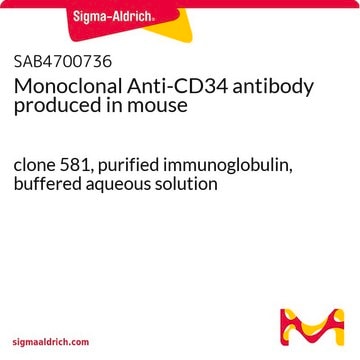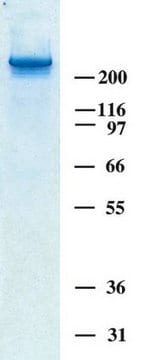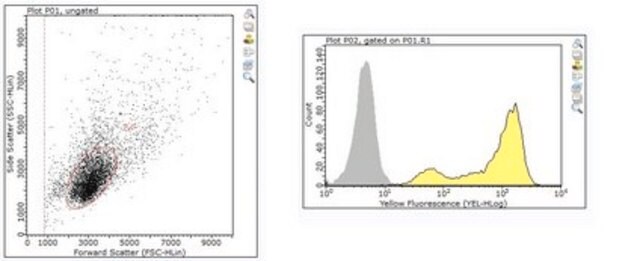CBL496
Anti-CD34 Class II Antibody, clone QBEND/10
clone QBEND/10, Chemicon®, from mouse
About This Item
Recommended Products
biological source
mouse
Quality Level
100
300
antibody form
purified antibody
antibody product type
primary antibodies
clone
QBEND/10, monoclonal
species reactivity
monkey, human
packaging
antibody small pack of 25 μg
manufacturer/tradename
Chemicon®
technique(s)
flow cytometry: suitable
immunohistochemistry (formalin-fixed, paraffin-embedded sections): suitable
immunoprecipitation (IP): suitable
isotype
IgG1
NCBI accession no.
UniProt accession no.
shipped in
ambient
target post-translational modification
unmodified
Gene Information
human ... CD34(947)
Specificity
KNOWN SPECIES CROSS REACTIVITY: Positive with rhesus monkey peripheral blood leucocytes in flow cytometry.
FUSION PARTNER: NSO myeloma cell line
Immunogen
Application
Studies into the control mechanisms of early haemopoiesis
Purification of haemopoietic cells from, for example, FACS
The antibody reacts with both frozen and fixed tissue sections from vascular endothelium and stromal fibroblasts
Immunohistochemistry in parraffin sections: Pretreatment is HIER with citrate buffer, pH 6.0.
Optimal working dilutions must be determined by the end user.
Inflammation & Immunology
Immunoglobulins & Immunology
Quality
Physical form
Storage and Stability
Other Notes
Legal Information
Disclaimer
Not finding the right product?
Try our Product Selector Tool.
recommended
Certificates of Analysis (COA)
Search for Certificates of Analysis (COA) by entering the products Lot/Batch Number. Lot and Batch Numbers can be found on a product’s label following the words ‘Lot’ or ‘Batch’.
Already Own This Product?
Find documentation for the products that you have recently purchased in the Document Library.
Our team of scientists has experience in all areas of research including Life Science, Material Science, Chemical Synthesis, Chromatography, Analytical and many others.
Contact Technical Service







